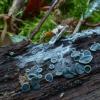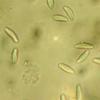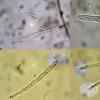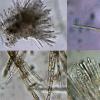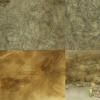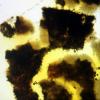
30-11-2025 12:53
 Edvin Johannesen
Edvin Johannesen
White short-stipitate apothecia found on thin twig

30-11-2025 10:47
 William Slosse
William Slosse
I recently found a collection of small Peziza sp.

27-11-2025 12:01
Thomas Læssøehttps://svampe.databasen.org/observations/10496727

27-11-2025 11:46
Thomas Læssøehttps://svampe.databasen.org/observations/10493918

17-09-2025 10:50
Heather MerryleesHi there!I am hoping for any advice on the identif

29-11-2025 08:40
 Andreas Millinger
Andreas Millinger
Hello,on a splintered part of a branch on the grou

28-11-2025 16:45
Nogueira HéctorNovember 23, 2025 Requejo de Sanabria (León) SPAI

25-11-2025 14:24
Thomas Læssøehttps://svampe.databasen.org/observations/10490522

27-11-2025 15:41
Thomas LæssøeSpores brownish, typically 4-celled; 26.8 x 2.4;

27-11-2025 11:31
Thomas LæssøeCollectors notes: Immersed ascomata, erumpent thro
saludos
Joseba
This is Chlorociboria, two species are rather similar.
Ellis & Ellis (1997): C. aeruginascens, spores 6-8 x 1-1,5 µm and C. aeruginosa, spores 10-14 x 1,5-2,5 µm.
Good noght.
Pol
Hi to both
I don't think this fungus is a Chlorociboria because the very refractive VBs of the paraphyses are talking us of a Mollisia species.

Hello,
very probably Mollisia olivascens (= Haglundia perelegans).
You should check the KOH reaction of the paraphyse vacuoles - it should be yellow.
best regards,
Andreas

Hi Joey,
did you see the multicellular hairs in foto 5, bottom left and right? They look like "Haglundia".
And the apothecia have a kind of "tough" appearance unlike "normal" Mollisia but as I know it form Mollisia olivascens and elegantior.
B.t.w. I had M. elegantior 7 days ago in a nature reserve on a lying rotten Fagus stem, decaying since 26 years (thrown by a storm in 1990).
best regards,
Andreas
